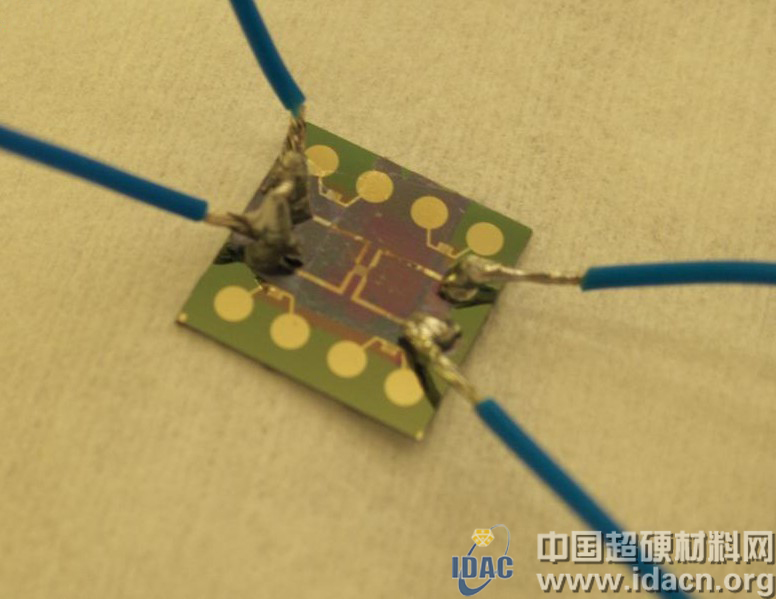
The picture shows the electronic components coated with graphene fins in the hot zone.
Due to the increasing demand for diverse functions, modern electronic devices generate a large amount of heat during the work process; it is particularly important to effectively dissipate heat and extend the life of the device. According to research, for every 10 °C increase in operating temperature, the lifetime of the device is reduced by half.
During the experiment, the researchers focused on the operating temperature in a small area where the electronic work is most dense, such as the internal temperature of the information processor. These tiny hot areas are distributed throughout all electrons. In terms of size, they exhibit a micro or nano size distribution; in other words, the thermal area ranges from a thousandth of a millimeter or less. The temperature in the hot zone is reduced from 155 ° C to 115 ° C with the help of graphene fins, which not only saves energy but also extends the life of electronic equipment.
Effective cooling technology is currently a technical challenge for most devices. Equipment such as automotive electronics, energy electronics, computers, wireless base stations, LEDs and LED lights. In automotive electronic systems, the spark plug of any cylinder of the ignition system can continuously generate up to 80 watts of spark and reach 300 watts in a millionth of a second. The thermal strength of the LED device is as high as 600 W/cm2 due to the extremely small component size.
Advanced cooling technology can bring significant advantages to the application of electronic products. According to a US survey, nearly 50% of electronic devices use cooling and cooling devices for data processing. (Compiled from 'Graphene provides efficient electronics cooling')
Product Industion
Silicon Carbide (SiC) is used quartz sand, petroleum coke (or coal), wood chips as raw material through high temperature resistance furnace smelting made. Silicon carbide is also called moissanite. Silicon carbide devides into Silicon Carbide Sand and Silicon Carbide Fine Powder. The color has green and black.
Black Silicon Carbide containing SiC about 95%, its toughness is higher than Green Silicon Carbide, most of the material used for processing low tensile strength of materials, such as glass, ceramics, stone, refractory, cast iron and non-ferrous metals, etc.
Green silicon carbide containing SiC is about 97% above, good self sharpening, mostly for processing hard alloy, titanium alloy and optical glass, also used for honing the cylinder and fine grinding HSS Cutting Tools.
Silicon Carbide
Silicon Carbide,Black Silicon Carbide,Silicon Carbide Plate, Silicon Carbide Tiles, Silicon Carbide Crucible
Ningxia XingKai Silicon Industry Co., Ltd. , http://www.xingkaisic.com